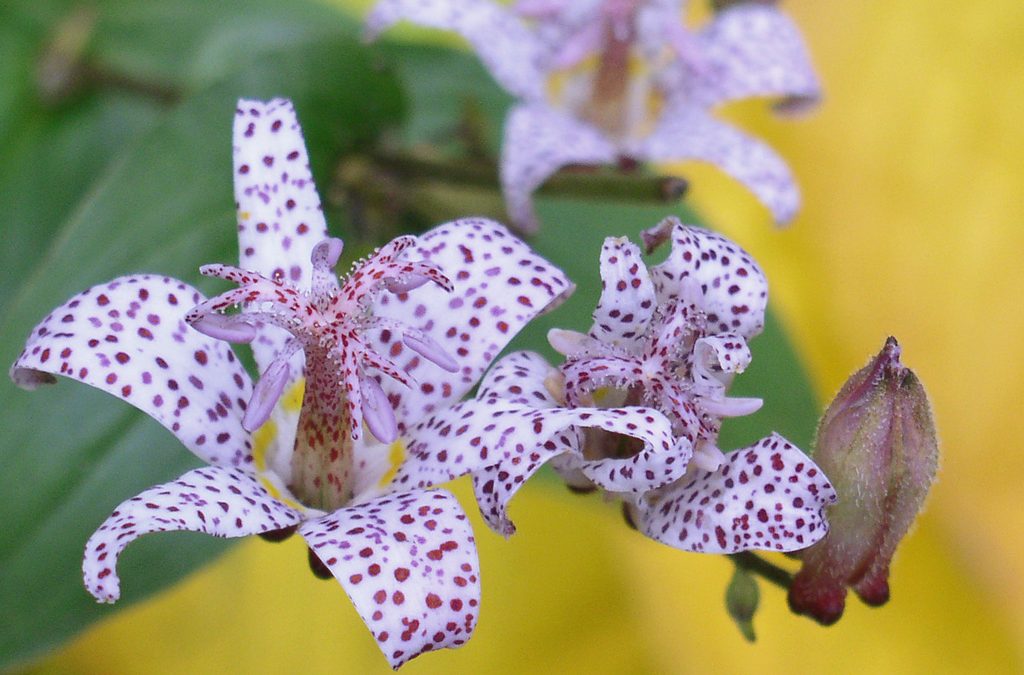About Tricyrtis
Toad lilies are standouts in late summer to fall, when the shade garden hardly has any plants in bloom. The unusual orchid-like flowers often bear dramatic spotting, inviting close-up inspection. Clumps in full bloom are impressive along edges of woodlands, in part to full shade. In or out of flower, upright arched stems display leaves that are often glossy or clasped, with beautiful veining and in some varieties, darkly spotted. The common name, Toad Lily, is thought to refer to the mottled blooms or leaves.
How to Care for your Tricyrtis
Try to plant your Tricyrtis as soon as possible. These are adaptable and will have no problem acclimating to your growing area. Be sure to keep the soil moist to the touch if you do not transplant immediately. Protect from strong winds and drying out before planting.
Where do I plant my Tricyrtis?
Tricyrtis require good drainage and shelter from strong winds. Plant in moist, rich soils in part or filtered shade. These woodland natives of the Himalayas to the Philippines are good fillers where early spring to summer perennials have past prime. Other good companion plants are ferns, hellebores, Solomon’s seal, astilbes and bergenias.
How do I plant my Tricyrtis?
Dig a hole that is twice as wide and deep as the container the plant is in. Work this soil well and incorporate a balanced, slow-release fertilizer into the planting hole. Backfill the hole and set the plant even with ground level, firming the soil around it. Water in very well, making sure that the roots are in contact with the soil. While plants are getting established in the garden, water as needed.
What should I do in order to have my Tricyrtis increase in beauty from year to year?
Provide steady moisture during the growing season. Protect plants from hot drying winds. When left to dry, foliage will brown along the edges and look ratty. Apply mulch for extra winter protection. Divide clumps in early spring when plants are dormant. Avoid overhead watering and pick off fallen leaves to reduce chances of leaf spotting.

